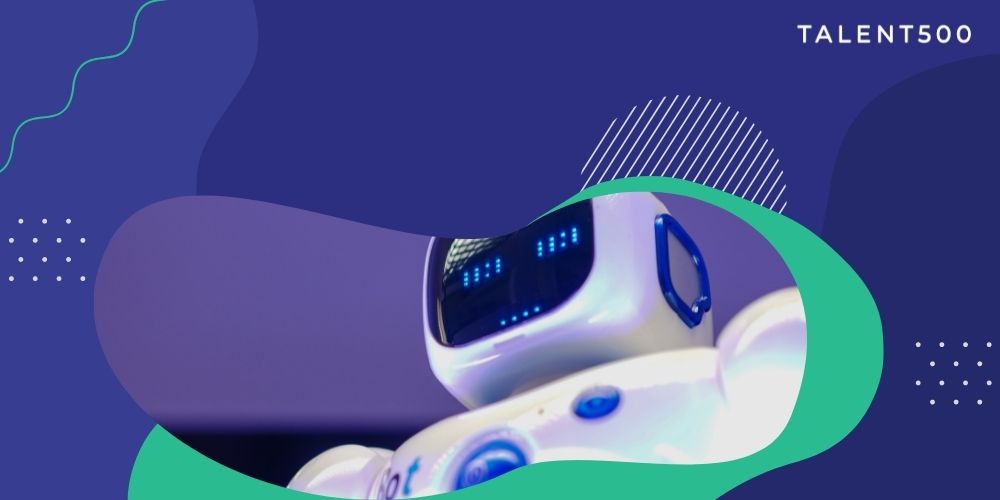The pandemic has not only resulted in an irreversible shift in the dynamics of work, but also created a new breed of mobile employees. Today’s workforce prizes autonomy and flexibility, often more than traditional triggers that attract and retain talent like compensation and benefits. Not only is a higher number of top talent demanding flexibility, but many are also willing to look for other opportunities should it not be offered.
The Talent500 State of Talent survey in 2022, conducted among 4,800 professionals across Indian cities, reveals this sea change in mindset: 87% of the tech talent are actively considering a job switch in 2022, and the primary reason for 55% of respondents is a lack of work-life balance. Further, for 83% flexibility is the top consideration for accepting a new offer.
Brushing aside these statistics as a pandemic reaction rather than a pandemic epiphany, can only add woes to an organization’s recruitment drive. Companies today are dealing with record highs in attrition rates and the intense competition in order to bag the right talent. After all, having greater agency over their lives, better control over their schedules, and the freedom to work when their productivity is highest, is what drives the workforce of today.
This phenomenon is not limited only to India or Asia, but complements sentiments across the globe. As per a survey by Slack, 72% of the employees prefer to work in a hybrid model. Other research also found that employees from the US value the flexibility to work from home for 2-3 days a week as much as 7% pay raise. What’s more, 40% of the employees who currently WFH would look for another job if required to work from the office.
While the why is easily understood in the advantages that flexibility offers employees – in terms of reduced stress and chances of burnout, higher job satisfaction and productivity –implementing flexible policies comes with other benefits for an organization. This includes increased loyalty, improved brand image, better employee morale and a larger talent pool to dip into. However, one fact that stands out among all these is the impact of flexibility on employee retention and attrition. After all, 89% of the companies saw better retention because of flexibility. And while it comes with its challenges, organizations can successfully implement and manage flexibility with the right frameworks in place.
Implementing flexibility – 4 tips for organizations
Flexibility involves both give and take. To foster fairness and accountability, here are a few pointers that leadership teams should keep in mind when implementing flexible policies.
Strengthen communication
Research indicates that 86% of employees and executives believe that ineffective communication causes workplace failures. When virtual, remote sessions overtake physical, face-to-face meetings, it is important for organizations to ensure that the employees are able to communicate with each other without any challenges or lags. While internal messaging tools, emails and video calls are all a must-have, what is critical is for managers to establish a clear guideline on which modes of communication require immediate attention and which matters require urgent communication such as those regarding deadlines or availability.
This helps employees respond to time-sensitive matters with ease and be accountable in remote settings. Since communication is so vital to success in such cases, companies can also offer soft skills training to boost this skill. In fact, 65% of employees who received training for communication had a higher performance score as per another survey.
Keep employee expectations clear
In flex work, making expectations clear to employees can help leaders track their performance as well as ensure that employees know the objectives of the employer. Employers can, and should involve employees in the goal setting process. This not only helps employees understand how their work contributes towards organizational objectives, but also feel a sense of ownership and engagement.
In fact, only 30% of the employees agree that their managers involve them in goal setting and these employees are 3.6 times more likely to be engaged as per a Gallup report. Research also suggests that productivity increases by 56% when managers help employees align their goals to the needs of the organization.
Spell out flexible policy terms clearly
Documenting the options that employees have when it comes to flexible work is key to ensuring smooth operations. Such formal policies can help organizations avoid inequities that come with informal and non-recorded arrangements and also help propagate company culture better. It is also necessary that managers or leaders put together the required details before the arrangement comes into effect.
While this may postpone how soon you can offer its benefits to your workforce, it does pay in the long-term. Include the working terms, infrastructural and other requirements, measures for keeping data safe, health precautions, and more in this policy and make it easy for talent to access them (such as via cloud) when needed.
Review performance
Performance reviews, a part of the traditional work arrangement, also have a big role to play in fully remote or hybrid models. For these to work, organizations need to be transparent about KPIs and other metrics used to measure employee productivity and impact. The only change when it comes to flex work is for employers to consider having such reviews at shorter frequency. This helps employees adapt better, keep their eye on the prize, and work towards achieving company goals in a more informed manner.
Managing flexibility – 3 ways for organizations to take the reigns
Implementing flexibility can come with certain disadvantages like procrastination, decreased engagement and loss of workplace culture. Here’s how companies can tide over these for a net positive gain.
Leverage technology
Tech has a starring role to play in most aspects of work today but enjoys the spotlight most when it comes to successfully implementing flex work. Organizations can and should use it to help teams collaborate, plan, learn, and adapt to evolving needs. According to this study, more than 80% of the employees stated that technology empowered them to better communicate and collaborate. Tools that help mitigate cybersecurity risks and keep sensitive information secure are also a must-have.
Make data accessible on a need-to-know basis
With everything going digital, employees need to have access to required data with ease. Easy and instant access to it makes them more productive and keeps them engaged. While this is highly valuable to organizations, a noteworthy aspect is to ensure that employees get access only to data that falls within their responsibilities. With ransomware attacks rising to 35%, a need-to-know access to data can reduce this risk and prevent data leaks.
Encourage collaboration
Collaboration can nurture stronger bonds within teams and boosts engagement. Research by Gallup suggests that those who have close workplace friends are 7X more likely to have better output, higher personal and customer engagement and enjoy greater well-being. To catalyze such relationships, employers can plan virtual celebrations, create intimate virtual spaces for employees to connect with each other, do a daily virtual huddle, and even create separate channels for specific categories as needed. Planning physical retreats as often as possible can also work wonders.
There are many companies who have successfully embraced workplace flexibility including Dell, Unilever, Sodexo and Humana, and yours can too. As a partner in aiding your efforts to hire, manage, and build global remote teams, look no further than Talent500.
With automated hiring processes and pre-vetting of profiles, we can help you find talent that adds value 5x times faster. Our in-depth pre-assessment has helped place 300,000+ professionals and build teams in 50+ organizations. Request a consultation now to know how you can leverage our tools to effortlessly manage and build your remote workforce.






